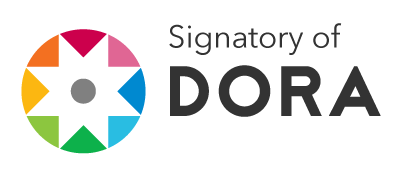Principal's Actions Through Distributed Leadership Dimensions: A Case Study of Two Public Spanish Schools
DOI:
https://doi.org/10.37467/gka-edurev.v1.1967Keywords:
Distributed leadership, Dimensions, Principal, Qualitative study, Case study, Spanish Publics SchoolsAbstract
Experience has shown that the attitude of the person assuming the management functions in the school is a key and decisive element in the quality of the change processes in the school. Of these ideas is born, the concept of distributed leadership (DL). The research design is a case study. The main objective is to understand the four dimensions of DL and the actions of the Principal through representative cases of two schools. The techniques used to collect information were documentary analysis, questionnaires, in-depth semi-structured interviews, and observation. An analysis of the data and conclusions are provided.
Downloads
Global Statistics ℹ️
|
297
Views
|
77
Downloads
|
|
374
Total
|
|
References
Arias, A., & Cantón, I. (2006). Leadership and management of educational centers. Barcelona: Davinci Continental.
Bennett, N. (2003). Distributed leadership Full report. United Kingdom: Nottingham. National College for School Leadership.
Bolden, R. (2011). Distributed leadership in organizations: A review of theory and research. International Journal of Management Reviews, 13(3), 251-269.
Bolívar, A., & San Fabián, J. (2013). LOMCE: A new law to improve educational quality? Organization and Educational Management, 21(1), 7-11.
Day, D. (2000). Leadership development: a review in context. Leadership Quarterly, 11(1), 581–613. DeFlaminis, J., Abdul-Jabbar, M., & Yoak, E. (2016). Distributed leadership in schools: A practical guide for learning and improvement. New York: Routledge.
Educa Madrid (2018). http://www.madrid.org/cs/Satellite?pagename=PortalEducacion/ Page/EDUC_home
Elmore, R. (2005). Accountable leadership. The Educational Forum (6) 2, 134-142.
García, I. (2018). Perceptions of schools’ principals through distributed leadership: case study of two public Spanish schools. Revista Lusófona de Educação 1(7):33-61.
García, I. (2019). El liderazgo distribuido y la percepción de los equipos directivos de las escuelas públicas de educación primaria madrileñas.(Tesis doctoral). Pablo Olavide University, Spain.
Gronn, P. (2002). Distributed Leadership. Second International Handbook of Educational Leadership and Administration, 1(2) 653-696.
Hargreaves, A., & Fink, D. (2000). The Three dimensions of reform. Educational Leadership 57(7), 30-34.
Harris, A. (2009). Distributed leadership: what we know. In: Harris, A. (ed.), Distributed Leadership: Different Perspectives (pp. 49-68, Ch.3). Dordrecht: Springer.
Harris, A. (2012). Distributed leadership: implications for the role of the principal. Journal of Management Development, 31(1), 7-17.
Harris, A., & DeFlaminis, J. (2016). Distributed leadership in practice: Evidence, misconceptions and possibilities. Management in Education, 30(4), 141-146.
Hulpia, H., Devos, G., & Van Keer, H. (2009). The influence of distributed leadership on teachers’ organizational commitment: A multilevel approach. The Journal of Educational Research, 103(1), 40-52.
Leithwood, K., Day, C., Sammons, P., Harris, A., & Hopkins, D. (2006). Seven strong claims about successful school leadership. Nottingham: DfES/NCSL.
Leithwood, K., & Seashore-Louis, K. (2011). Linking leadership to student learning. San Francisco: John Wiley y Sons.
Pont, B., Nusche, D., & Moorman, H. (2009). Improve school leadership: policy and practice. Paris: OECD Publishing.
Ross, J., & Berger, M. (2009). Equity and leadership: Research-based strategies for school leaders. School leadership and management, 29(5), 463-476.
Spillane, J. (2012). Distributed leadership. San Francisco: Jossey-Bass.
Spillane, J. (2017). Leadership and Learning: Conceptualizing Relations Between School Administrative Practice and Instructional Practice. In: How School Leaders Contribute to Student Success (pp. 49-67, Ch 2). Springer International Publishing.
Spillane, J., & Diamond, J. (2007). Distributed leadership in practice. New York: Teachers College Press.
Spillane, J., Camburn, E. & Pareja, A. (2007). Taking a Distributed Perspective to the School Principal’s Workday. Leadership and Policy in Schools, 6(1), 103-125.
Stake, R. (2013). Qualitative / naturalistic research: epistemological problems. Education and Selection, 7(1), 19-27.
Downloads
Published
How to Cite
Issue
Section
License
Those authors who publish in this journal accept the following terms:
-
Authors retain copyright.
-
Authors transfer to the journal the right of first publication. The journal also owns the publishing rights.
-
All published contents are governed by an Attribution-NoDerivatives 4.0 International License.
Access the informative version and legal text of the license. By virtue of this, third parties are allowed to use what is published as long as they mention the authorship of the work and the first publication in this journal. If you transform the material, you may not distribute the modified work. -
Authors may make other independent and additional contractual arrangements for non-exclusive distribution of the version of the article published in this journal (e.g., inclusion in an institutional repository or publication in a book) as long as they clearly indicate that the work was first published in this journal.
- Authors are allowed and recommended to publish their work on the Internet (for example on institutional and personal websites), following the publication of, and referencing the journal, as this could lead to constructive exchanges and a more extensive and quick circulation of published works (see The Effect of Open Access).













